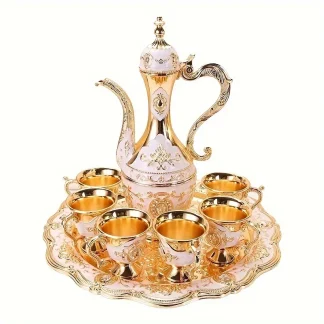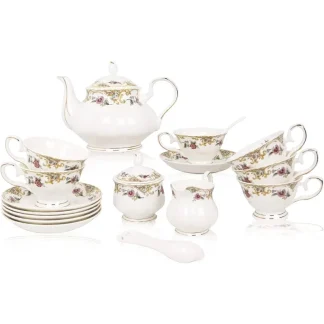Vintage Teapots: A Touch of Nostalgia and Timeless Elegance
The charm of a vintage teapot goes beyond its practical use—it is a nostalgic reminder of bygone eras, where tea was more than a beverage but a social and cultural ritual. These options are prized for their unique designs, craftsmanship, and the stories they carry from generations past. Whether you’re an avid collector or a tea lover, these pieces bring a sense of timeless elegance and history to your tea service, making every cup a journey into the past.
The History of Vintage Teapots
The history of these pieces dates back to the 16th century when tea first arrived in Europe from China. Early European pieces were heavily influenced by Chinese designs, often crafted from porcelain and decorated with intricate motifs. As tea became a staple of British society in the 18th century, the demand for items grew, leading to the development of these pieces in different materials such as silver, pewter, and bone china. Each era contributed to the evolution of product design, giving birth to the stunning pieces that collectors cherish today.
During the Victorian and Edwardian periods, teapots became an essential part of formal tea services. The designs were often ornate, with floral patterns, gold accents, and delicate handles, embodying the elegance of the time. These products from these periods often reflect the craftsmanship and artistry that defined the era, making them highly sought-after by collectors and enthusiasts alike.
Popular Styles of Vintage Teapots
These options come in a variety of styles, each reflecting the aesthetic and cultural influences of its time. Here are some of the most popular styles you’ll find in the world of these items:
- Victorian Teapots: Victorian-era teapots are known for their elaborate designs, often featuring floral patterns, hand-painted details, and gold trimming. These products exude opulence and are perfect for those who appreciate the ornate beauty of 19th-century design.
- Art Deco Teapots: The Art Deco movement of the 1920s and 1930s introduced these products with sleek, geometric shapes and bold, vibrant colors. These products stand out for their modern, avant-garde designs, appealing to collectors who love the elegance and glamour of this period.
- Mid-Century Teapots: Mid-century teapots, from the 1940s to the 1960s, tend to feature simple yet stylish designs with clean lines, muted colors, and minimalist patterns. These items reflect the post-war shift towards functionality and modernity in everyday objects.
- Novelty Teapots: These items often come in playful shapes and designs, such as animals, cottages, or cars. These whimsical pieces were particularly popular in the mid-20th century and are beloved by collectors for their quirky charm.
- Blue and White Porcelain Teapots: Inspired by Chinese porcelain, blue and white teapots were a hallmark of 18th-century tea culture. Many vintage pieces feature this classic color combination, often adorned with intricate floral or pastoral scenes.
Why Collect Vintage Teapots?
Collecting these items are not only a hobby but also a way to preserve a piece of history. Here are a few reasons why these pieces hold such appeal for collectors:
- Historical Significance: Vintage teapots offer a glimpse into the past, reflecting the cultural and social norms of their time. From the tea rituals of the Victorian elite to the functional yet stylish products of the mid-century, each item tells a story of its era.
- Craftsmanship: These options were hand-crafted, often featuring intricate details that are rare in modern mass-produced items. The level of craftsmanship in these pieces make them unique, collectible pieces.
- Decorative Appeal: Whether displayed on a shelf or used for special occasions, vintage teapots add a touch of nostalgia and beauty to any home. Their intricate designs and delicate shapes make them perfect decorative pieces.
- Investment Value: These products, particularly those from famous potteries or designers, can appreciate in value over time. Collectors often seek out pieces from renowned brands like Wedgwood, Royal Albert, or Clarice Cliff.
- Connection to Tradition: For many, using a vintage teapot is a way to honor the tradition of tea-drinking, where every detail—from the choice of these items to the brewing process—was part of a cherished ritual.
How to Identify a True Vintage Teapot
When searching for these products, it’s important to be able to identify an authentic piece. Here are some tips to help you spot a genuine product:
- Look for Maker’s Marks: Many vintage teapots, particularly those from well-known manufacturers, will have a maker’s mark on the base. This can include the name of the pottery, a logo, or a production date. Brands like Wedgwood, Royal Doulton, and Staffordshire are well-known for their quality products.
- Check the Material: These items can be made from a variety of materials, including porcelain, bone china, silver, and ceramics. Bone china pieces, known for their translucency and delicate appearance, are highly prized. Silver pieces, often used in formal settings, also hold great value.
- Examine the Design: The design of a teapot can give you clues about its age. For example, these items are typically more ornate, while mid-century items often have a sleeker, more minimalist design.
- Condition: The condition of these pieces can also indicate its age. A well-preserved product will show signs of wear, such as minor scratches or crazing (fine cracks in the glaze), but these should not detract from its beauty or functionality.
Caring for Your Vintage Teapot
To preserve the beauty and functionality of your vintage teapot, it’s important to care for it properly. Here are some tips for maintaining these items:
- Hand Wash Only: Most products, especially those made from delicate materials like bone china or porcelain, should be hand washed with mild soap and warm water. Avoid abrasive sponges or harsh chemicals that could damage the surface.
- Handle with Care: Vintage teapots can be fragile, so always handle them with care, especially when washing or pouring tea. Be sure to store these items in a safe place where it won’t be knocked over or chipped.
- Remove Stains Naturally: Tea stains can build up inside these items over time. To remove them, use a natural cleaning solution like baking soda and water or a mixture of vinegar and warm water. Let it sit for a few minutes before gently scrubbing.
- Display with Pride: If you’re not using your vintage teapot regularly, consider displaying it in a cabinet or on a shelf. Not only will it serve as a beautiful decorative piece, but it will also help protect it from accidental damage.
Conclusion
These options are more than just functional items—they are pieces of history that reflect the artistry and cultural significance of tea-drinking through the ages. Whether you’re a collector or simply a lover of tea, owning these items are a way to connect with the traditions of the past while adding a touch of elegance to your present-day tea service. From the intricate designs of these pieces to the sleek lines of mid-century styles, each product tells a story of its time, making every cup of tea a moment to savor.
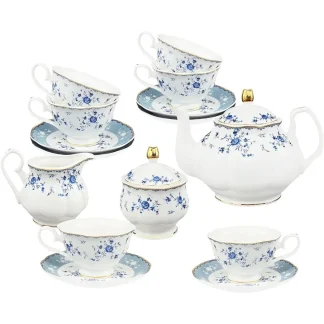
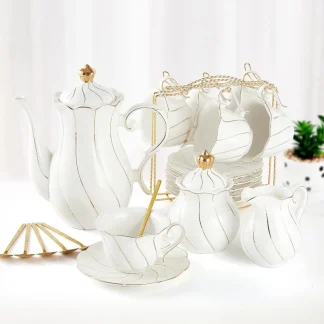
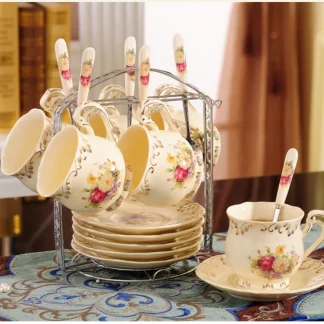 + 5
+ 5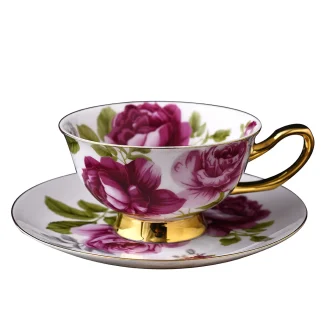 + 4
+ 4